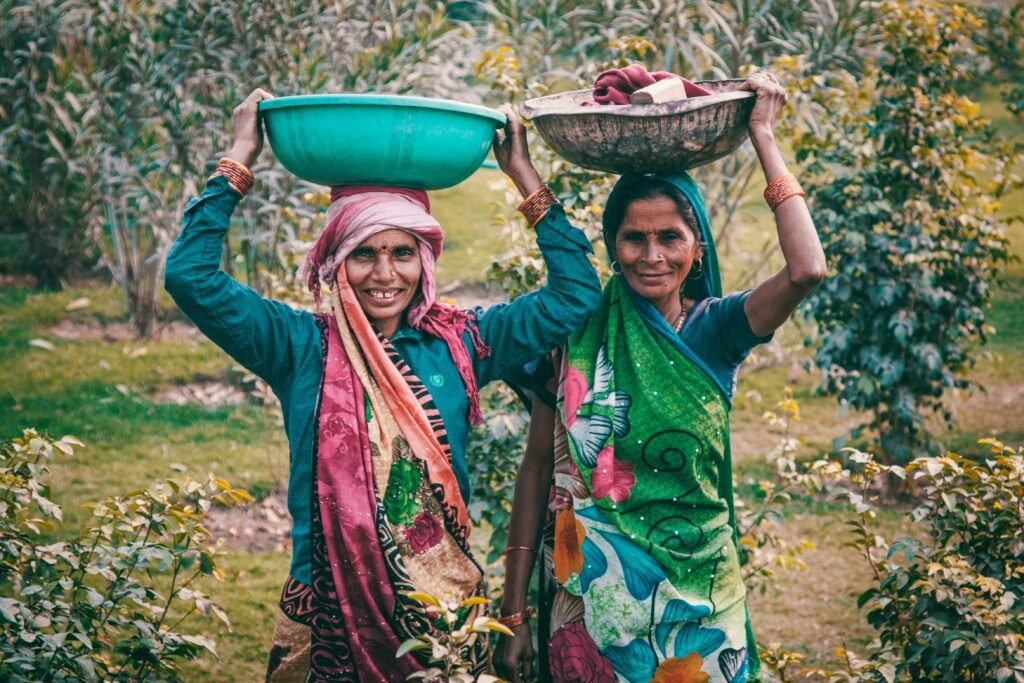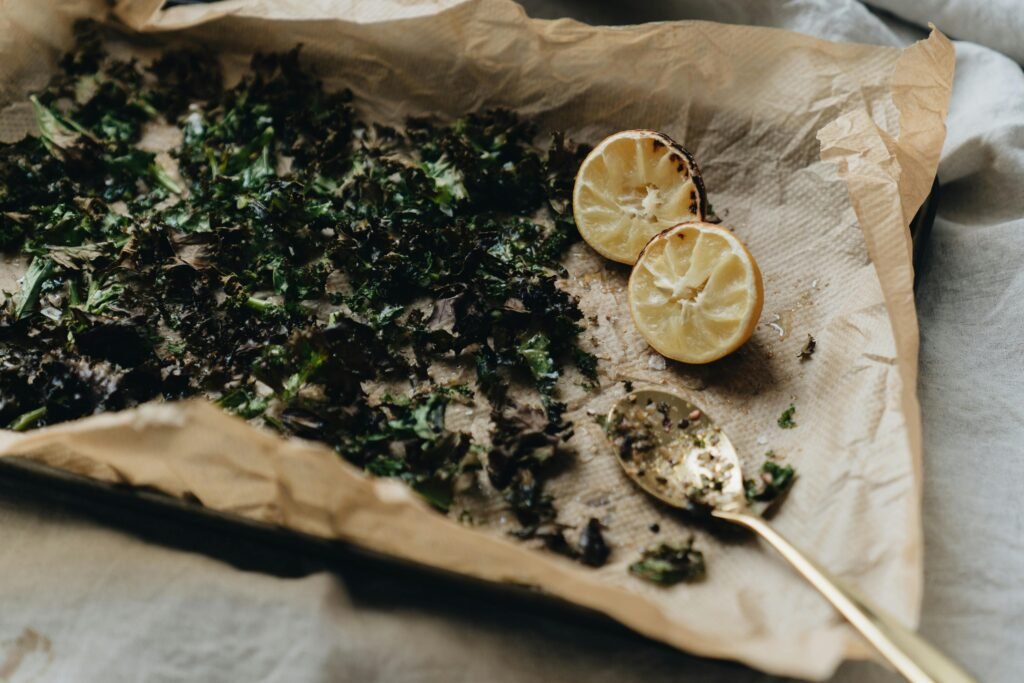Introduction to Traditional Healing Practices
Traditional healing practices are integral components of health and wellness systems across the globe, deeply rooted in the cultural and historical contexts of diverse societies. These practices encompass a wide range of methods and beliefs concerning health and illness, often drawing on local resources, spiritual beliefs, and ancestral knowledge. By providing healing services that are tailored to the unique needs of individuals within their communities, traditional medicine plays a vital role in maintaining the social fabric and cultural identity of these populations.

Throughout history, traditional healing practices have been the first line of defense against illness, especially in societies where access to modern medical interventions is limited. They include various methodologies such as herbal medicine, acupuncture, spiritual healing, and bodywork techniques. The significance of traditional healing is emphasized not only in individual health restoration but also in the holistic approach that these systems often advocate. This approach considers not just the physical symptoms but also the mental, emotional, and spiritual well-being of individuals.
In many cultures, these practices are passed down through generations, preserving indigenous knowledge and its practical applications. Elders often serve as the primary custodians of this information, conducting rituals and healing practices that strengthen communal bonds and promote cultural continuity. As interest in holistic and alternative medicine grows in the modern era, traditional healing practices offer alternative perspectives on health and wellness, challenging the dominance of Western medicine and its methodologies.
Furthermore, the integration of traditional healing practices into contemporary healthcare systems highlights their relevance in addressing health disparities and ensuring accessible care. By acknowledging and incorporating local knowledge, societies can develop more comprehensive health solutions that honor tradition while embracing innovation. As this exploration continues, it becomes evident that traditional healing practices are not merely relics of the past but are dynamic systems that contribute significantly to global health and well-being.
Ayurveda: The Science of Life in India
Ayurveda, a traditional healing system originating from India over 5,000 years ago, is often referred to as “the science of life.” This holistic approach emphasizes balance within the body, mind, and spirit, recognizing that optimal health transcends mere physical well-being. Central to Ayurvedic philosophy is the concept of doshas, which are three primary energies—Vata, Pitta, and Kapha—that govern physiological activities and contribute to an individual’s unique constitution or prakriti.
The balance of these doshas is essential for maintaining health, and imbalances can lead to various ailments. Each person possesses a distinct combination of these energies, thereby influencing their physical attributes, emotional disposition, and susceptibility to illness. Ayurvedic practices, therefore, seek to restore harmony by identifying an individual’s dosha and addressing their specific needs through tailored therapies.

One of the fundamental aspects of Ayurveda is the use of natural remedies, prominently featuring herbs, diet, and lifestyle modifications. Ayurvedic practitioners emphasize the importance of a balanced diet, where foods are selected based on their qualities and effects on the doshas. For instance, individuals with a predominant Pitta dosha may benefit from cooling foods to alleviate heat in the body, while those with a Vata constitution might require grounding, nourishing foods to stabilize their energy levels.
Additionally, Ayurveda incorporates various therapeutic techniques including Panchakarma, a detoxification process aimed at cleansing the body of toxins, and the use of massage therapies with herbal oils to rejuvenate both body and mind. By embracing these practices, individuals can foster a deeper understanding of their health, promote longevity, and enhance overall well-being. This system’s emphasis on prevention and wellness underscores its relevance in today’s world, where a growing interest in holistic health solutions is prevalent.
Herbal Medicine in the Andes
The Andean region, rich in biodiversity, is home to a plethora of herbal medicine practices deeply rooted in indigenous culture. The knowledge surrounding these herbal traditions has been passed down through generations, reflecting a profound understanding of the local ecosystem and the healing properties of various plants. Indigenous communities have long relied on natural resources for health and well-being, integrating herbal medicine into their daily lives.

Among the most prevalent herbs used in the Andes is muña (Minthostachys mollis), a mint variety traditionally used for digestive ailments and respiratory issues. Its fresh aroma and soothing properties make it a staple in both teas and topical applications. Another widely recognized herb is chiric sanango (Brunfelsia grandiflora), known for its psychoactive effects and use in spiritual healing, showcasing the intricate connection between physical health and spiritual well-being.
Moreover, local healers, or sani, play a pivotal role in the application of herbal medicine within communities. These practitioners utilize a holistic approach, combining physical healing with spiritual guidance. The use of herbal remedies often incorporates rituals and prayers, emphasizing the significance of the relationship between the individual and the natural world. This practice reinforces a sense of community, as individuals gather to share knowledge and experiences, fostering social bonds and collective resilience.
The integration of herbal medicine into daily life extends beyond mere physical healing; it offers a window into the cultural heritage of the Andean people. As globalization progresses, there is a growing interest in these traditional healing methods, prompting a resurgence of appreciation and respect for indigenous practices. Sustainable harvesting of medicinal plants has become a focal point, ensuring that these valuable resources are preserved for future generations, while continuing to serve their purpose in promoting health and spiritual connection.
Traditional Chinese Medicine: A Holistic Approach
Traditional Chinese Medicine (TCM) is a comprehensive system of healthcare that has evolved over thousands of years, deeply rooted in the ancient philosophies of China. Central to TCM is the belief in the body’s ability to maintain balance and harmony, both internally and with the external environment. This holistic approach emphasizes the interconnectedness of mind, body, and spirit, suggesting that physical health cannot be separated from emotional and mental well-being.
TCM employs various diagnostic methods to assess a patient’s health, primarily relying on techniques such as observation, listening, inquiry, and palpation. Practitioners carefully observe the tongue’s appearance and the pulse to gather essential clues about a person’s overall state of health. These diagnostic practices help identify imbalances in the flow of Qi (vital energy) and the functions of the body’s organs, which are essential components of TCM philosophy.
Therapeutic modalities in Traditional Chinese Medicine include acupuncture, herbal medicine, and Qi Gong. Acupuncture, one of the most recognized practices, involves the insertion of fine needles into specific points on the body. This technique aims to restore the natural flow of Qi, thereby alleviating pain and treating various medical conditions. Herbal medicine in TCM utilizes a wide range of natural substances, including roots, leaves, and minerals, which are combined to formulate remedies tailored to the individual’s unique needs. Additionally, Qi Gong incorporates physical movements, breathing techniques, and meditation, fostering relaxation and enhancing one’s overall health and vitality.
The philosophy of harmony and balance within TCM serves as a guiding principle, offering an alternative perspective on health that contrasts with more conventional medical approaches. By integrating these traditional practices into contemporary healthcare, many individuals find renewed pathways to wellness, ultimately drawing upon the rich heritage of Traditional Chinese Medicine.
African Traditional Healing: Spiritual and Herbal Remedies
African traditional healing practices encompass a rich tapestry of cultural beliefs and techniques, integrating both herbal remedies and spiritual healing. Across the continent, various ethnic groups have developed their distinctive modalities which reflect their historical contexts, environments, and social structures. Herbal medicine forms a crucial component of these practices, utilizing indigenous plants and natural substances tailored to treat a wide range of ailments. Often, these remedies are prepared through traditional methods, including infusions, decoctions, and poultices, emphasizing the significance of knowledge passed down through generations.
One notable example can be found in the use of the African baobab tree, whose leaves, fruits, and seeds are harvested for their nutritional and medicinal properties. Additionally, in many communities, the roots and bark of trees such as the African potato (Hypoxis hemerocallidea) are used to treat various diseases, underscoring the deep connection between local flora and ethnic healing traditions. Healers, known as traditional medicine practitioners or herbalists, play a pivotal role in these systems by diagnosing illnesses, prescribing treatments, and guiding patients through their healing journeys.
Furthermore, spirituality is interwoven into African healing practices, offering an essential dimension that distinguishes it from conventional Western medicine. Spiritual healers, often referred to as sangomas or shamans, diagnose ailments through ancestral communication, divination, or ritualistic practices. They assert that many illnesses arise from spiritual disharmony or disconnection from the community, thus highlighting the importance of social and spiritual well-being. Rituals during healing sessions may involve chanting, drumming, or the use of sacred objects, fostering a sense of unity and support within communities.
The interplay of herbal and spiritual practices creates a holistic approach to health in African communities, illustrating a profound respect for both the physical and metaphysical aspects of well-being. This integrated methodology not only addresses immediate health concerns but also reinforces community ties and cultural identity, emphasizing the invaluable role of traditional healers within the societal fabric.
Native American Healing Practices
Native American healing practices are deeply rooted in spiritual beliefs and cultural traditions that emphasize the interconnectedness of individuals with nature, the community, and the cosmos. Central to these practices is the understanding that health is not merely the absence of illness, but a holistic state of being that encompasses physical, mental, and spiritual well-being. This comprehensive approach to healing is evident in various rituals and techniques employed by different tribes across North America.
One prominent method of healing used by many Native American tribes is the sweat lodge ceremony. This ceremonial practice involves participants entering a small, dark structure where water is poured over heated stones, creating steam. The resulting environment fosters purification and renewal. The experience is not solely physical; it also encompasses emotional and spiritual elements. Participants often engage in prayer and meditation during the ceremony, seeking guidance and healing from higher powers while also fostering a communal bond.
In addition to sweat lodges, Native American healing practices frequently incorporate traditional healing ceremonies that may include singing, dancing, and the use of medicinal plants. These ceremonies are often conducted by respected healers known as shamans or medicine men and women, who act as intermediaries between the spiritual and physical realms. Plants, such as sage, sweetgrass, and cedar, are commonly used for cleansing rituals, believed to carry sacred properties that promote healing and protection.
The significance of nature in Native American medicine cannot be overstated. The environment is viewed as a living entity, and many tribes believe that plants and animals possess their own spirits. This deep respect for nature ensures that healing practices align with the rhythms of the earth, reinforcing the tribe’s connection to the land. Such practices not only contribute to individual health but also foster communal well-being, as healing is often seen as a collective endeavor, benefiting the entire community.
Indigenous Healing Traditions in Australia: The Role of Songlines
Indigenous Australians possess a rich tapestry of healing practices deeply intertwined with the land and their cultural heritage. At the heart of these traditions lies the concept of Songlines, which serve not only as geographical markers but also as oral narratives that encapsulate the spiritual and healing knowledge of Indigenous communities. Songlines are often viewed as pathways through the landscape, with songs mapping out trails and connecting various elements of nature, thus linking individuals to their ancestral stories and cultural identity.

The significance of Songlines in Indigenous healing is profound. These stories are passed down from generation to generation, carrying lessons about the natural world, health, and well-being. The healing methods often encompass the use of native plants, spiritual rituals, and communal gatherings that reinforce social bonds and support networks. Elders, as custodians of this knowledge, play a critical role in guiding the younger generations in understanding how to utilize these teachings in real-life circumstances. The stories told through Songlines emphasize the interconnection between people and the environment, stressing that one’s physical health is inextricably linked to their spiritual state and kinship ties.
In many Indigenous cultures, healing is approached holistically, integrating the body, mind, and spirit. This broad perspective allows for a more comprehensive understanding of illness and wellness, often seeing challenges not merely as individual afflictions but as symptoms of a disrupted connection to ancestors, land, and community. The rituals surrounding Songlines often involve music, movement, and storytelling, engaging participants in a dynamic process that fosters healing through shared experience and remembrance of cultural ties. By nurturing these connections, Indigenous Australians continue to reaffirm their resilience and cultural identity, embodying a healing tradition that remains vital in contemporary society.
The Role of Modern Medicine and Integrative Approaches
In recent years, there has been a growing interest in the integration of traditional healing practices with modern medicine, fostering a holistic approach to healthcare. This movement recognizes that diverse therapeutic modalities can complement each other, thereby enhancing patient care. Traditional healing systems, which often focus on the body, mind, and spirit, can provide valuable insights and techniques that modern medicine may overlook. As patients seek a comprehensive understanding of their health, the implementation of integrative approaches becomes increasingly relevant.

One significant benefit of combining traditional and modern practices is the improved patient experience. Individuals frequently report greater satisfaction when their treatments encompass both conventional medical interventions and traditional remedies. This holistic approach allows for a more personalized healthcare experience that acknowledges cultural values and beliefs. Moreover, the potential for improved health outcomes is promising, as complementary therapies often enhance the efficacy of conventional treatments, helping to manage chronic conditions and promote overall well-being.
However, the integration of traditional healing practices into modern medicine does not come without its challenges. A primary concern is the validation of these therapies through scientific research. Many traditional practices lack the robust evidence required by contemporary healthcare systems, which often rely heavily on randomized controlled trials. Consequently, establishing credibility for these methods can be complicated, although emerging studies are beginning to bridge this gap by documenting the effectiveness of certain traditional practices.
Successful examples of integration can be observed in various communities worldwide. In some regions, hospitals have incorporated traditional healers into their care teams, allowing for a blend of expertise that respects both systems. These collaborations facilitate better communication and understanding between practitioners and patients, fostering a cooperative spirit that enhances the healing experience. This evolving relationship between modern medicine and traditional healing signifies a pivotal shift toward a more inclusive and comprehensive approach to health care.
Conclusion: The Future of Traditional Healing Practices
As we reflect on the diverse landscape of traditional healing practices around the world, it is evident that these time-honored approaches offer valuable insights and methodologies that remain relevant in contemporary society. From herbal remedies and spiritual rituals to community healing and integrative therapies, the significance of these practices cannot be understated. They provide not only alternative avenues for health and wellness but also incorporate cultural heritage and psychological support, fostering a holistic approach to well-being.
The preservation of traditional healing practices is essential, especially as globalization and modernization challenge their existence. The knowledge passed down through generations represents a profound connection to cultural identities and historical contexts. Efforts must be made to safeguard this wisdom against the backdrop of rapidly changing healthcare landscapes. Collaborations between practitioners of traditional healing and modern medicine can enhance treatment efficacy, broaden the scope of patient care, and lead to enriched health outcomes.
Looking ahead, there lies significant potential for the integration of traditional and modern health care systems. Acknowledging the unique strengths of each can pave the way for a more multifaceted approach to health. Initiatives aimed at training healthcare providers in traditional methods alongside conventional techniques could lead to a more inclusive healthcare model. Furthermore, increasing awareness about traditional healing practices among the general public can foster respect and understanding, encouraging individuals to explore and utilize these methods as complementary options to modern medicine.
In conclusion, traditional healing practices are not merely relics of the past; they hold invaluable wisdom that can coexist with modern health care. By fostering dialogue and collaboration between these two realms, we can ensure that these practices continue to thrive and nurture future generations, ultimately leading to a more comprehensive understanding of health and wellness.






